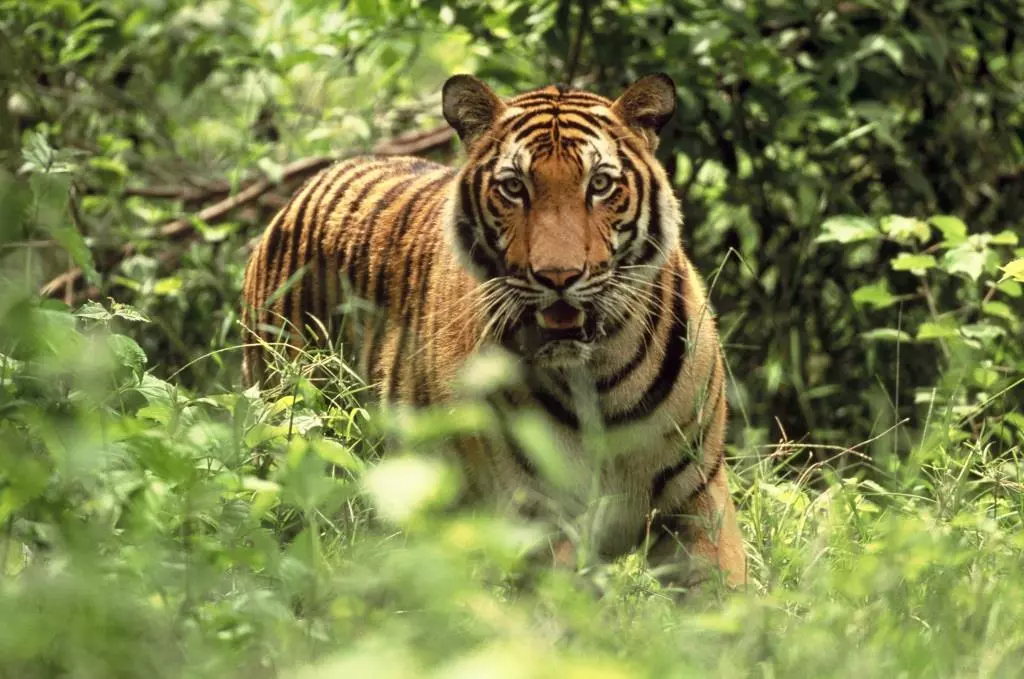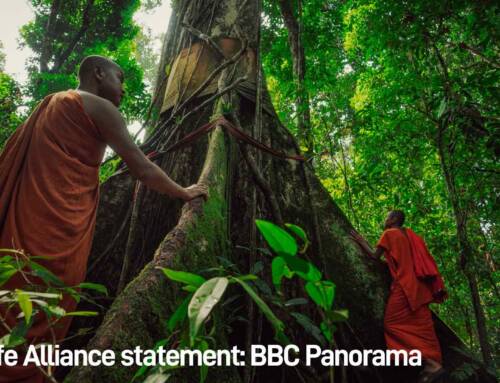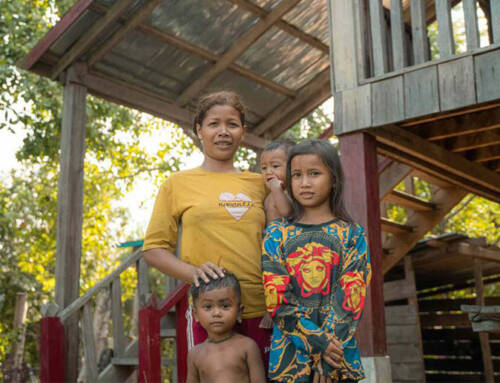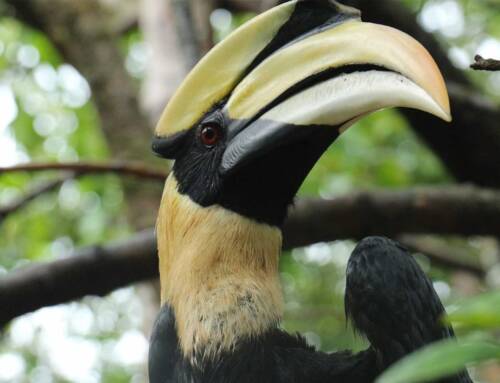On this day in 2010, tiger range countries came together with a bold ambition: to double the number of tigers by 2022. Now, Cambodia is making good on its plan to reintroduce tigers. Here’s an explainer on tiger reintroduction in the Cardamom Rainforest Landscape.
A Happy World Tiger Day Update: On 28 July 2022, a cross sectoral Consultation Meeting was held between the Mnistry of Environment (MoE), Wildlife Alliance and other key stakeholders on Tiger Reintroduction and Tiger Prey Restoration Program. This is a great step forward for tiger reintroduction plans.
What is tiger reintroduction?
First, a little history about wild tiger populations. Around the world, tiger numbers have been dropping over the past decades.
Once upon a time, tigers once roamed over a huge area, from Turkey to Russia’s eastern coast, but by the end of the 20th century their numbers had plummeted. In fact, between 1993 and 2014, around half of the world’s tigers were lost. Why? Tigers need large territories to hunt and breed effectively. But human modifications like urbanization and agricultural expansion means that tigers now occupy just 7% of their original range. Today, tigers survive in small, isolated pockets of forest, where they are vulnerable to poaching.
Today, tiger numbers are gradually rebounding in South Asia, but rampant poaching and habitat degradation continues to push tigers to the brink of extinction in Southeast Asia. Right now, tigers have been virtually wiped out in Vietnam and Laos PDR and barely cling on in Malaysia and Indonesia.
Meanwhile, in Cambodia, tigers were declared functionally extinct in 2016. The Royal Government of Cambodia and Wildlife Alliance wants to change that. As Wildlife Alliance CEO Suwanna Gauntlett told the Guardian at the time, the tiger has “been hunted to extinction because of weak law enforcement and the government is now reacting.” Together, we formulated a bold plan to bring tigers back to Cambodia. That is the essence of tiger reintroduction.
Who will reintroduce tigers in Cambodia?
Details of tiger reintroduction in Cambodia are included in the Cambodia Tiger Action Plan (CTAP) 2011-2022. This was drafted by relevant government agencies and partners, including Wildlife Alliance. The Plan was approved by the Royal Government of Cambodia in March 2016. The CTAP is a species management plan which reflects Cambodia’s commitment to the TX2 global goal to double tigers by the year 2022. Since then, the Royal Government of Cambodia and Wildlife Alliance has launched a world first: a transnational tiger reintroduction plan.
Wildlife Alliance works with the government and local communities to protect one of the last unfragmented rainforests in Southeast Asia: the Cardamom Rainforest landscape, which is now the priority site in Cambodia for tiger reintroduction.
Together with government partners, Wildlife Alliance has protected the Cardamoms since 2002. Together, we address threats through hands-on protection of some 1.2 million hectares of dense rainforest in the Cardamoms. To do this, we create strategic protection plans, conduct zoning and demarcation, provide critical environmental education and support communities to develop conservation-friendly activities like community-based ecotourism. Read more about how we protect the Cardamoms here.
Why reintroduce tigers in Cambodia?
There are many benefits to reintroducing tigers in Cambodia. The most obvious one is perhaps restoration of balance to the ecosystem.
Restoring balance in the ecosystem
Right now, the Cardamom Rainforest Landscape is missing its top predator: the tiger. Without this big cat to keep prey animal numbers in check, things can get out of whack. That said, this may be to the advantage of the next biggest cat, clouded leopards which still roam the Cardamoms!
Few people understand the importance of tigers better than Indian Prime Minister, Narendra Modi who is himself a great guardian of tigers.
Speaking at the 3rd Asia Ministerial Conference on Tiger Conservation in New Delhi,
Modi stressed that “by protecting the tiger, we protect the entire ecosystem and the ecological services, which are equally crucial for the well-being of human beings.”
WWF, the author of the TX2 goal agrees.“[I]t is important to be clear,” said WWF Cambodia’s country director Seak Teng, “that by saving tigers we are saving much more.”
The great news is that key stakeholders are committed to addressing threats to tigers. Ministry of Environment spokesperson Sao Sopheap emphasised that the government is “[sending a] bigger signal to country, to community, to general public that the government is very serious about conservation.”
Cambodia can contribute to global tiger conservation
Conservationists argue that as one of 13 tiger range countries, Cambodia owes the world every effort to help towards the goal of doubling tiger numbers. Help is at hand with the introduction of enhanced forest protection measures via new ranger stations, plus the expansion of the REDD+ Project which supports and incentivises conservation-friendly activities for rainforest communities in the Cardamoms. This expansion means coverage beyond the current Southern Cardamom National Park, to the northern Phnom Samkos Wildlife Sanctuary. Both of these protected areas are included within the proposed tiger reintroduction release site areas.
Tiger Tourism potential in Cambodia
The opportunity to see tigers in the wild via managed tourism sites will no doubt attract visitors to Cambodia, as in India. This opportunity gives tourists a reason to extend their stay in the Kingdom beyond paying a visit to Angkor Wat, which has been an ambition of the Ministry of Tourism for some time. However, for Cambodia to benefit from tiger ecotourism dollars will take significant investment, as noted by Minister of Tourism, Thong Khon: “sustainable wildlife conservation requires ample financial resources.” Mr Khon went on to state the Ministry’s commitment to working with related stakeholders to make this happen. Fortunately, the Ministry of Environment now has a financial mechanism in place to make this happen: the Southern Cardamom and planned Phnom Samkos REDD+ Projects.
Where will tigers be reintroduced in Cambodia?
Tigers need a large, continuous range with abundant prey and protection from hunting. The network of protected areas in the Cardamom Rainforest Landscape offer a vast expanse of forest cover, grasslands, and wetlands that are ideal for tiger reintroduction. These protected areas include the Southern Cardamom National Park, Tatai Wildlife Sanctuary and Phnom Samkos Wildlife Sanctuary.
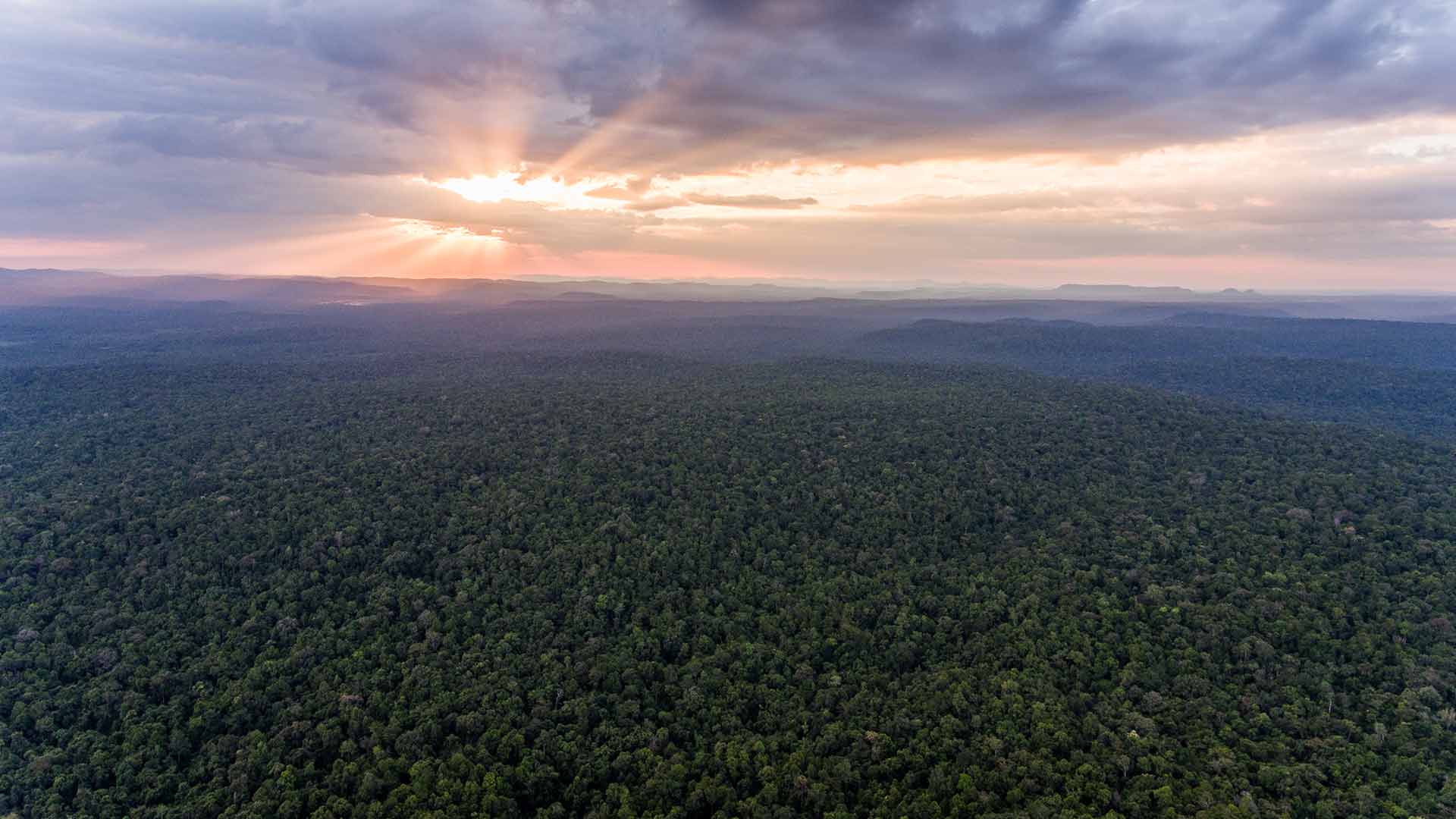
A History of Key Actions for tigers in Cambodia
- 2007: Last records of tiger in Cambodia 2011: Inception of the Cambodia Tiger Action Plan
- 2016: Cambodia Tiger Action Plan approved by the Royal Government of Cambodia
- 2017: Cambodian Prime Minister Hun Sen’s endorses tiger reintroduction in the Cardamom Rainforest Landscape
- 2018: Launch of the Southern Cardamoms REDD+ Project
- 2020 & 2021: 2 new ranger stations opened in Cardamom Rainforest Landscape
- 2021: Third tiger prey base survey
- 2022: Inception of the Phnom Samkos REDD+ Project
How will tigers be reintroduced?
The number one priority is to reduce threats to tigers, including those which wiped them out in Cambodia in the first place. This translates into more rangers on the ground to patrol tigers’ future home. This is exactly what Wildlife Alliance has done by opening 2 new ranger stations since 2020, in addition to its other 9 operational stations throughout the Cardamoms. These ranger teams conduct over 5,000 patrols every year and have removed over 300,000 snares to date.
Another important step is increased community engagement, which is happening through support for development of conservation-friendly activities like community-based ecotourism plus financial and technical assistance of essential infrastructure such as water wells. In addition, free and prior informed consent will be sought and there are plans for a Livestock Compensation Fund for affected communities.
In terms of protocol, the proposed tiger reintroduction site in the Cardamoms meets species requirements, including:
- Inviolate Core Zone >2,000-km2 : created and secured*
- Prey base : 3 tiger prey base surveys conducted, finding good tiger prey density
- Law Enforcement: professionally equipped, trained, and supervised rangers in <4 Patrol Stations strategically situated around the Tiger Core Zone
- Human-Wildlife Conflict prevention: safeguards developed
- Water sources : rivers and streams are present and well distributed throughout the landscape.
- Community engagement : good community support. A FPIC and Livestock Compensation Fund are planned *Within the core zone, there are zero human settlements, with the nearest 25km away.
When will tigers be reintroduced in Cambodia?
This is the million dollar question! As above, things are falling into place for tigers to return to Cambodia. The habitat is suitable and protected, tiger prey is sufficient and the government is onboard.
The rest is down to continuing technical and capacity building efforts, alongside community consultation and engagement. In summary, “tigers need three things,” as John Goodrich,
Chief Scientist and Tiger Program Senior Director for global wildcat conservation organisation Panthera, noted five years ago. “They need space with good habitat… They need prey. And they need to be left alone. They need protection from people, they need protection from poaching.”
In 2017, Goodrich’s conclusion was that achieving those three things was “going to be a huge challenge in Cambodia.” We agree. But here at Wildlife Alliance, we are doing the work to make tiger reintroduction happen in the near future.

